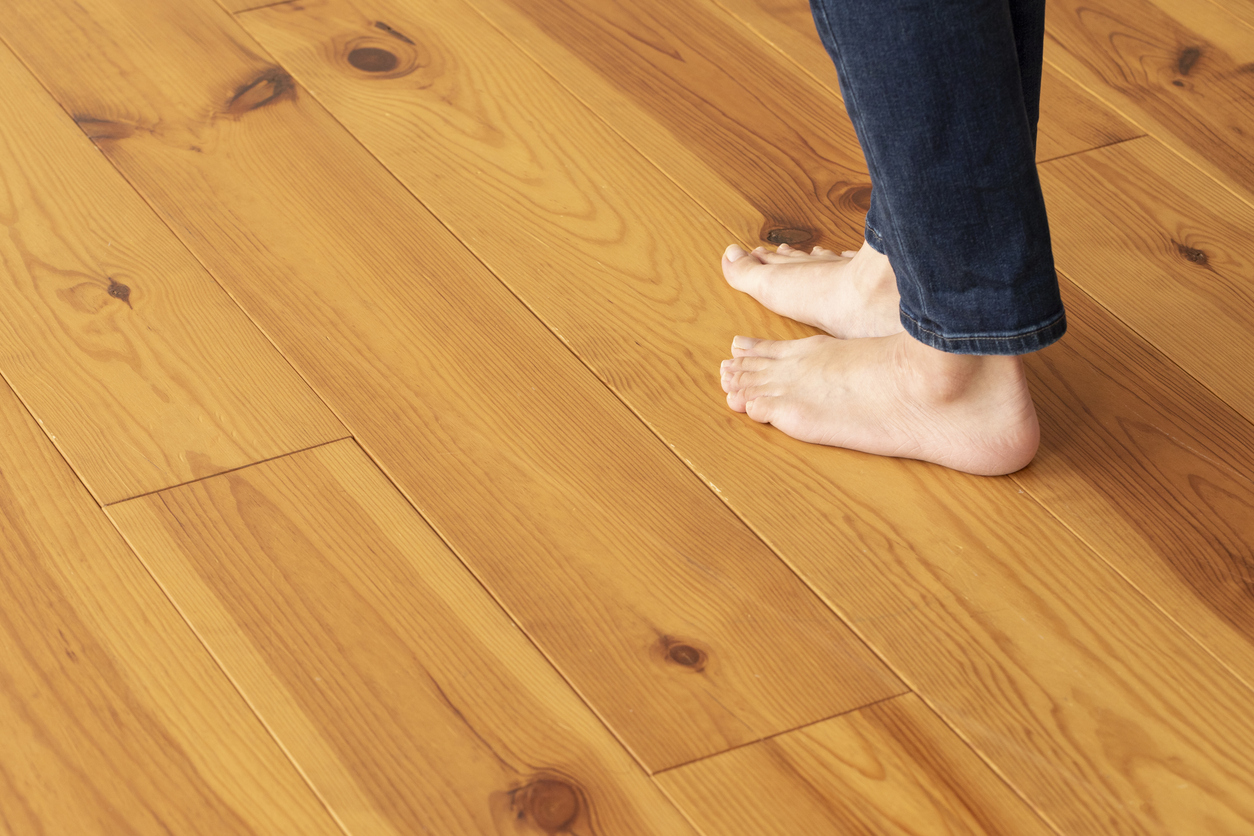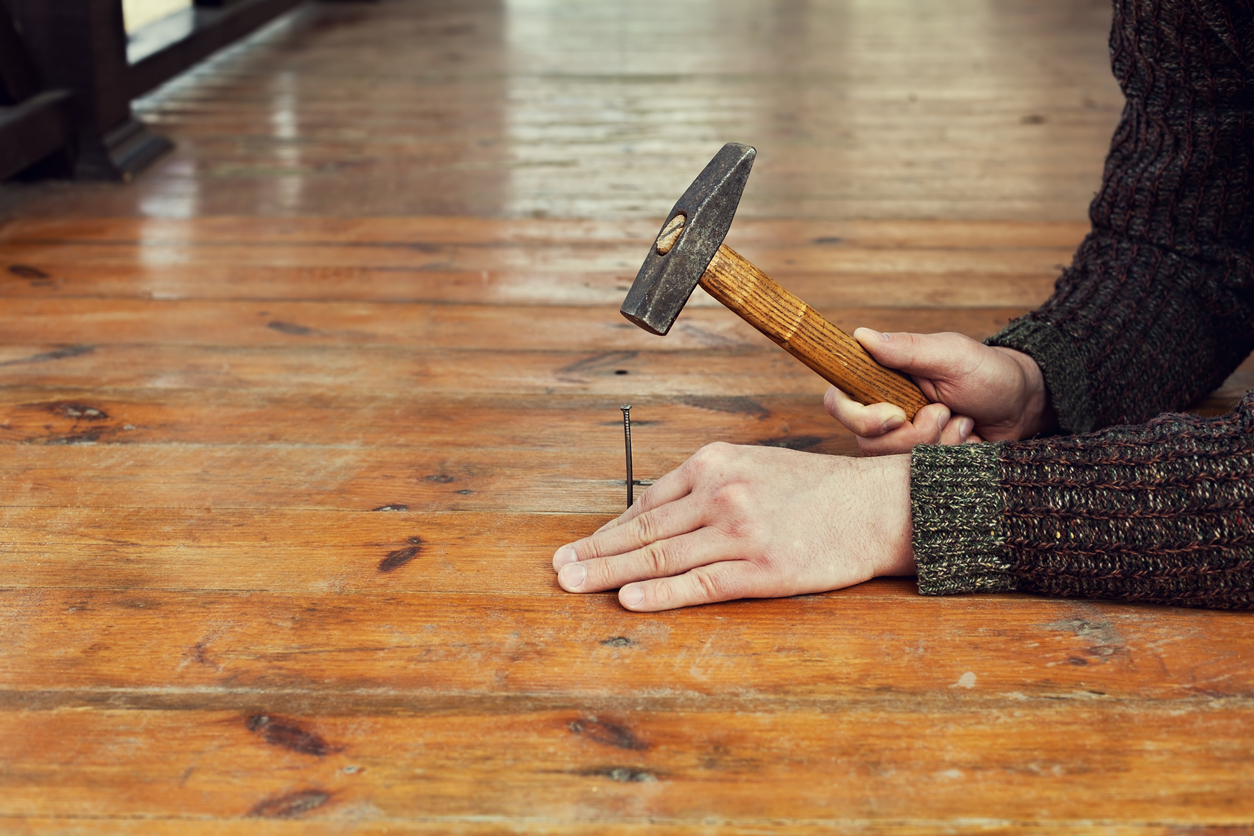How to Fix Squeaky Wood Floors: A Comprehensive Guide
By Hartco Flooring Expert, Published August 22, 2025
When you walk across the room, are you constantly disturbed by the eerie creaking sound? Unfortunately, it’s an all-too-common occurrence for homeowners with wood flooring.
While it may seem like a significant defect, squeaky wood floors are usually an easy fix. And best of all, it typically doesn’t take too long to apply a fix.
But let’s start by understanding the causes of creaky hardwood floors.

Why Do Wood Floors Squeak?
Floor squeaks occur due to friction between floorboards or between the floor and the subfloor. For that reason, wood floors aren’t the only culprit – laminate, tile, and even carpeted floors can creak.
Creaking happens for several reasons:
- Age: Natural materials like wood can dry out and shrink over time, resulting in gaps that can lead to squeaks.
- Poor Materials: Low-quality flooring materials may wear down quickly, resulting in squeaking.
- Poor Installation: Improper hardwood flooring installation can cause gaps and loose areas, leading to squeaks. It’s essential to avoid gaps between the subfloor and your flooring planks. It’s also vital to ensure the subfloor is level and properly installed.
- Seasonal Changes: As the humidity levels change with the seasons, wood can expand and contract. And that can impact the tightness and fit of the floorboards.
Wood can absorb moisture and expand in warmer, more humid months. This expansion can cause pressure and lead to squeaks.
Conversely, in the colder, drier months, wood can lose moisture and shrink. That can create gaps between the floorboards and the subfloor. If the floorboards move within these gaps, this can also cause squeaks.
Preventive Measures for Squeaky Floors
Prevention is always better than a cure. Here’s how you can avoid squeaky floors in the first place:
- Quality Matters: When choosing flooring materials, opt for durable, moisture-resistant options that are less likely to shrink or warp. For example, engineered hardwood is less likely to expand and contract than solid hardwood flooring.
- Include an Expansion Gap: Install your wood flooring correctly, ensuring there are no gaps or loose areas. Space subfloor panels with a 1/8-inch gap at all edges and ends to provide room for naturally occurring expansion.
- Let Your Floors Acclimate: Allow the subfloor and wood flooring to acclimate to the room before installation.
- Proper Nailing: Use the correct nail size and spacing, and ensure the nails penetrate the floor joists and sink fully. Generally, you should space nails 6 inches apart along the center of supported panel edges. Space them 12 inches on center on the interior supports of the panels.
- Proper Gluing: A glued and nailed floor system ensures a flat, stable floor. Be sure the joists are dry and free of dirt before applying. Apply a continuous ¼-inch diameter of construction adhesive to the framing members. Use a serpentine pattern for supports that are 3½ inches or wider. Additionally, apply two beads of glue to the joint locations on the panel. A 1/8-inch glue bead applied at the tongue-and-groove joints can improve floor performance.
- Maintenance: Regularly check your floors for signs of wear and tear. Pay strict attention to cleaning up spills; water damage can cause floorboards to warp and creak. Early detection can prevent minor issues from turning into significant problems.
How to Stop Wood Floors from Creaking
Despite your best efforts, you still might encounter creaky floors. Fortunately, some simple and affordable fixes are available, even for novice DIY enthusiasts. Of course, it starts with identifying the source of the squeak. Walk across the floor and mark areas where you encounter squeaks.
Once located, here are some remedies:
Tightening Loose Floorboards
You can tighten any loose floorboards using finish nails or screws. First, drill a pilot hole to prevent splitting the wood. Then drive a screw into the hole to secure the floorboard to the subfloor. You may want to find a discreet spot to avoid an eyesore.

Using Lubricants
If friction is the cause, use a lubricant to correct the issue. Sprinkle powdered graphite or talcum powder into the joints to reduce friction.
Inserting Wood Shims
You may need to insert a wooden shim for gaps between the floors and the subfloor. Add wood shims until there’s a secure fit at the squeaky spot.
Humidity Control
As mentioned, humidity fluctuations cause wood to expand and contract. Use a dehumidifier in the summer to reduce moisture. During a dry winter, use a humidifier to replenish the air’s moisture.
Squeaky Floor Repair Kits
Specialized kits are available at home centers and on Amazon. They provide all the necessary materials and instructions to fix squeaky floors. These kits are an excellent solution for homeowners new to DIY projects.
Professional Solutions for Squeaky Floors
You may need a professional if any of the above don’t yield results. That’s especially true if you notice sagging or significant movement in your floors.
They may need to add support between the joists. For example, you may need to replace a warped. In a worst-case scenario, they might even need to replace a portion of your wood flooring or subfloor.
Start with Real Hardwood Flooring
As mentioned, quality plays a role in avoiding annoying creaky wood floors. So start with quality hardwoods from Hartco.
We offer genuine hardwood flooring in popular species, including hickory, maple, and oak. Plus, we back many of our wood floors with a 50-year residential warranty, one of the best in the industry.
You can find a Hartco® flooring dealer near you by using our retail locator.
